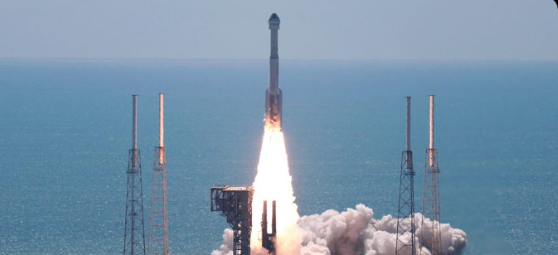NASA and Boeing have decided to extend the Starliner spacecraft’s stay at the International Space Station (ISS) from the originally planned undocking on June 18 to no earlier than June 22. This delay allows for additional in-depth testing and analysis of the spacecraft, which is on its first crewed mission.
🚨🇺🇸BOEING STARLINER TO FACE CRUCIAL RETURN JUNE 22
The Boeing Starliner, set to undock from the ISS on June 22, continues to face numerous challenges.
During its current mission, the spacecraft has encountered a 5th helium leak and a stuck oxidizer valve.
These issues follow… https://t.co/Kf3cH7H3kN pic.twitter.com/Y58GQaMZrx
— Mario Nawfal (@MarioNawfal) June 14, 2024
The extension provides the astronaut crew more time to conduct detailed examinations of Starliner’s various systems and hardware in orbit. This opportunity is deemed crucial as it enables the crew to perform on-orbit testing, refine previous observations, and enhance the overall knowledge base for future Starliner missions.
During its mission, Starliner has encountered several technical issues, including five helium leaks identified since the mission’s start, with the first being noted during a launch scrub on May 6. Additionally, there have been concerns with a reaction control system (RCS) thruster oxidizer isolation valve in the service module that did not close properly, and irregularities with some thrusters during the docking process. Although some thrusters were temporarily disabled by the spacecraft’s software, they were later reactivated, except for one that remained offline for docking.
NASA’s flight controllers plan to conduct a hot fire test while the spacecraft is docked to the station, firing seven of its eight aft-facing thrusters in two short bursts to evaluate their performance for the rest of the mission. This test is separate from the helium leak issues, as clarified by Steve Stich, NASA’s Commercial Crew Program manager.
The splashdown date for @BoeingSpace’s #Starliner spacecraft has been announced, both the company and @NASA stated, reported @AnthonyLeone.
Find out more here: https://t.co/qHZEpasGYy pic.twitter.com/drEN9KvRpZ
— Spectrum Bay News 9 (@BN9) June 14, 2024
The extended stay also includes new tasks for NASA astronauts Butch Wilmore and Suni Williams, who docked the Starliner to the ISS on June 6. These tasks are designed to further assess Starliner’s capabilities, including additional hatch operations and ‘safe haven’ testing, and provide more experience in piloting the spacecraft using the forward window.
The astronauts have also contributed to the ISS by assisting with spacewalks and other maintenance activities, as well as conducting scientific research. This flexible schedule was intentionally planned by ISS mission managers to accommodate potential shifts in launch, docking, and undocking timings.
Further updates on Starliner’s test flight will be provided in a press briefing scheduled for June 18. The final decision on primary and backup landing sites for Starliner in the southwestern United States is still pending.
.@NASA and @BoeingSpace will discuss Starliner’s mission and departure from the @Space_Station as part of the agency’s Boeing Crew Flight Test in a pre-departure media teleconference at 12 p.m. EDT Tuesday, June 18.
NASA, Boeing, and station management teams will evaluate… pic.twitter.com/OCFQkRWAba
— NASA Space Operations (@NASASpaceOps) June 14, 2024
Mark Nappi, Boeing’s vice president and program manager of its Commercial Crew Program division, emphasized the significance of the extended mission duration. He stated that it offers a unique opportunity to conduct extensive testing and gather valuable data that can benefit all partners involved, including the crew onboard.
Major Points:
- NASA and Boeing have postponed the Starliner spacecraft’s undocking from the ISS from June 18 to no earlier than June 22 to allow for extended testing and analysis.
- The delay provides the crew additional time to conduct detailed assessments of the spacecraft’s systems and hardware while in orbit, crucial for future missions.
- Technical issues encountered include five helium leaks and problems with a reaction control system thruster and other thrusters during docking, which are being actively addressed.
- New tasks for the crew include additional hatch operations, ‘safe haven’ testing, and piloting assessments, alongside their ongoing contributions to ISS maintenance and scientific research.
- A press briefing scheduled for June 18 will provide further updates on Starliner’s test flight and landing site decisions in the southwestern United States.
James Kravitz – Reprinted with permission of Whatfinger News



